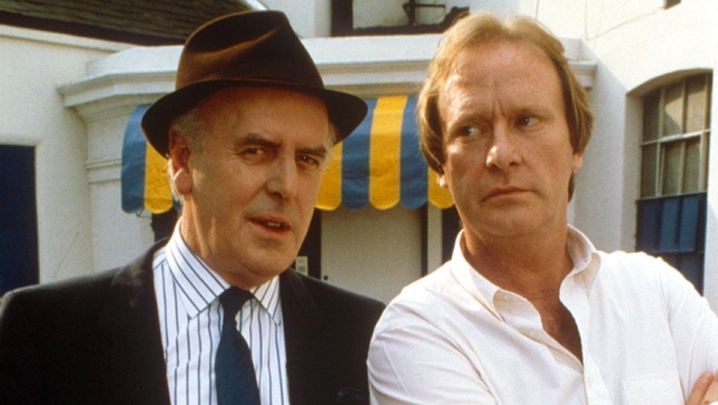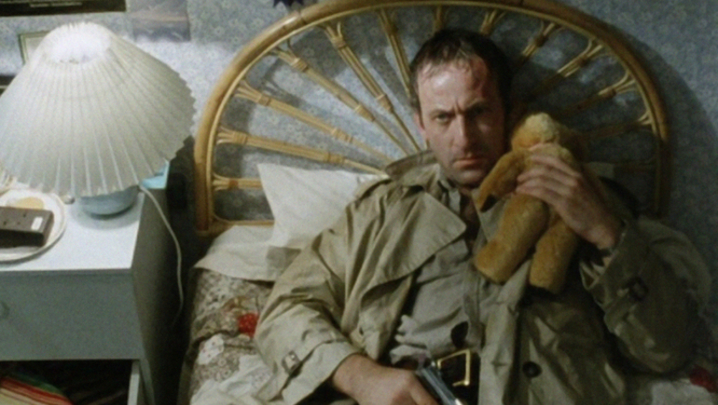Matthew Bell salutes Britain's best cop show, which painted a gritty, vibrant picture of a now-vanished city
From a distance of close to half a century, London is almost unrecognisable. Cortinas and Consuls squeal around a semi-derelict city, pockmarked by Second World War bomb sites. Houses and shops are dilapidated, a permanent pall of smoke hangs in the boozers; people look old, even those who aren’t. Everything is grey.
Everything except detective inspector Jack Regan’s iconic brown suit and green kipper tie. And he was always hungry for nicking villains: “We’re the Sweeney, son, and we haven’t had any dinner – you’ve kept us waiting.”
In the 1970s, the armed robber was at the top of the criminal ladder and London was at his mercy. In a city without CCTV that ran on cash, not credit, banks, bookies and security vans were the targets. Trying to stop them were the Sweeney. (“Sweeney Todd” is cockney rhyming slang for the Flying Squad, a specialist police unit that tackled serious crime.) It was cops vs robbers, with both sides tooled up – ideally with a sawn-off shotgun – and ready to shoot it out.
The Sweeney was the brainchild of Ian Kennedy Martin (brother of Troy, who created the long-running BBC cop show Z Cars). It ran for four series on ITV from 1975 to 1978. Two cinema spin-offs, with added sex and violence, were released towards the end of the TV run.
Regan, played by John Thaw, dishevelled, fag on the go, whisky bottle in his office top drawer, was the archetypal 1970s cop. His sidekick, detective sergeant George Carter, played by Dennis Waterman, was barely more presentable, yet – and it is one of the series’ enduring mysteries – women, frequently posh ones who should have been way out of their league, fell for them.
In real life, many Flying Squad officers were bent. Indeed, while the series was on air, the squad’s commander, detective chief superintendent Kenneth Drury, was convicted of corruption and imprisoned for eight years.
Regan and Carter were honest, though not averse to cutting corners if it meant feeling a collar. They loved nothing more than a dust up – if they deserved it, villains were given a right hiding.
But The Sweeney was not a hackneyed cop show. Behind the car chases, punch-ups, birds and boozing, there was powerful drama, with beautifully drawn characters and memorable dialogue.
Regular writer Trevor Preston gave Regan, who was raging against the unfairness of a cop’s life, these lines: “It’s a bloody holiday camp for thieves and weirdos – all the rubbish. You age prematurely trying to sort some of them out. Try and protect the public, and all they do is call you fascist. You nail a villain and some ponced-up, pinstripe Hampstead barrister screws it up like an old fag packet on a point of procedure, then pops off for a game of squash and a glass of Madeira. He’s taking home 30 grand a year, and we can just about afford 10 days in Eastbourne and a second-hand car. It’s all bloody wrong, my son.”
The series employed some of the best British character actors: the established – Brian Blessed, Warren Mitchell and Diana Dors – and the up-and-coming, such as Hywel Bennett and Maureen Lipman. Villains and their families were portrayed as humans rather than cartoons.
Everyone remembers Harry South’s funky, brass-heavy theme that plays over The Sweeney’s opening credits. The poignant minor-key end theme is just as good, evoking the pathos that fills so many of the show’s characters, including Regan’s.
The 53rd and final episode of the series, “Jack or Knave?”, sees a disillusioned Regan resign after being falsely accused of corruption: “You want me to crawl back to work and be terribly grateful that I didn’t get nicked for something I didn’t do. Well, you can stuff it!” Hailing a cab, he’s driven away, slowly, down the Hammersmith Road, to the accompaniment of South’s melancholic music. A perfect ending to British TV’s greatest cop show.
The Sweeney is on ITV4 and also available on Amazon Prime.




